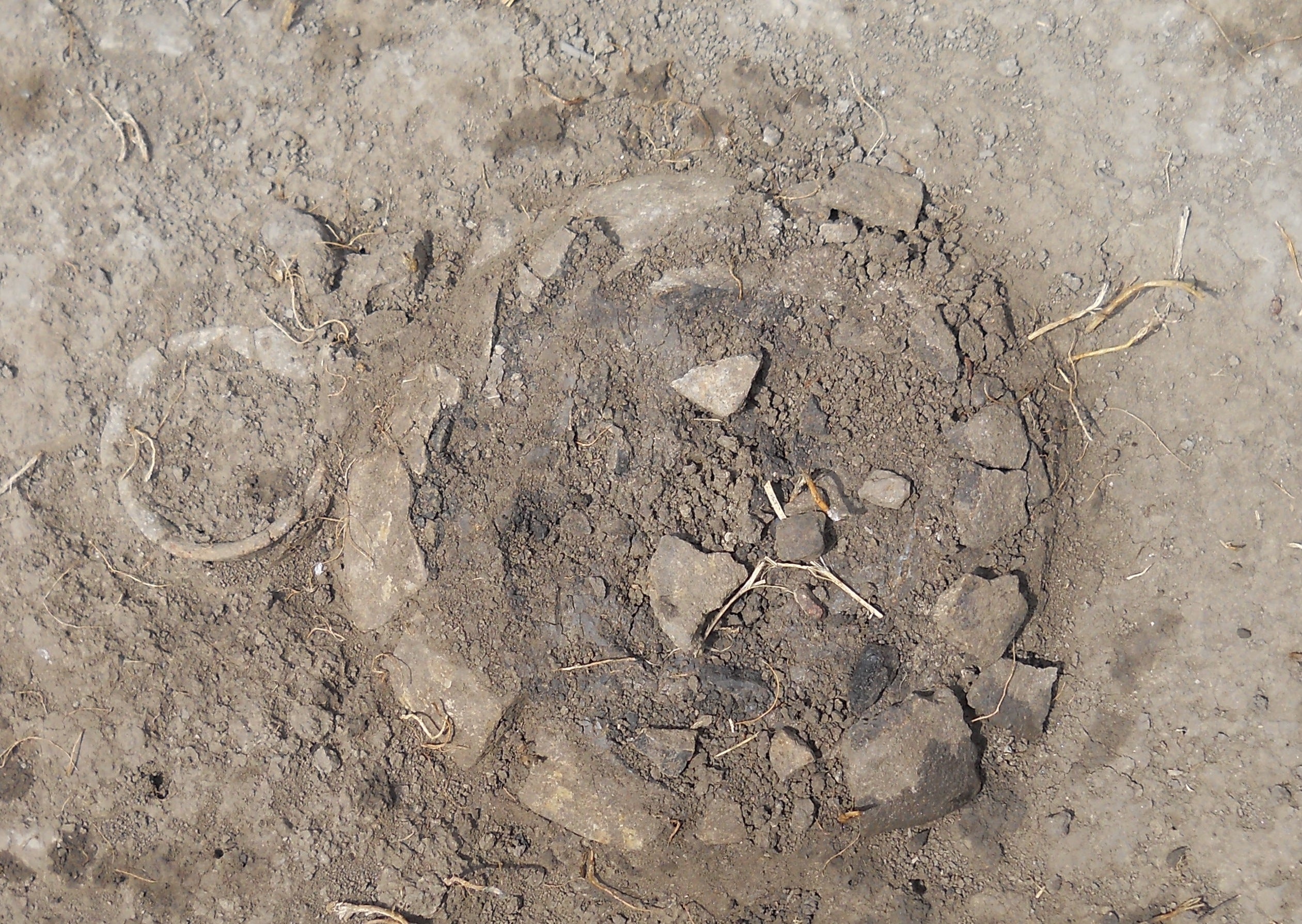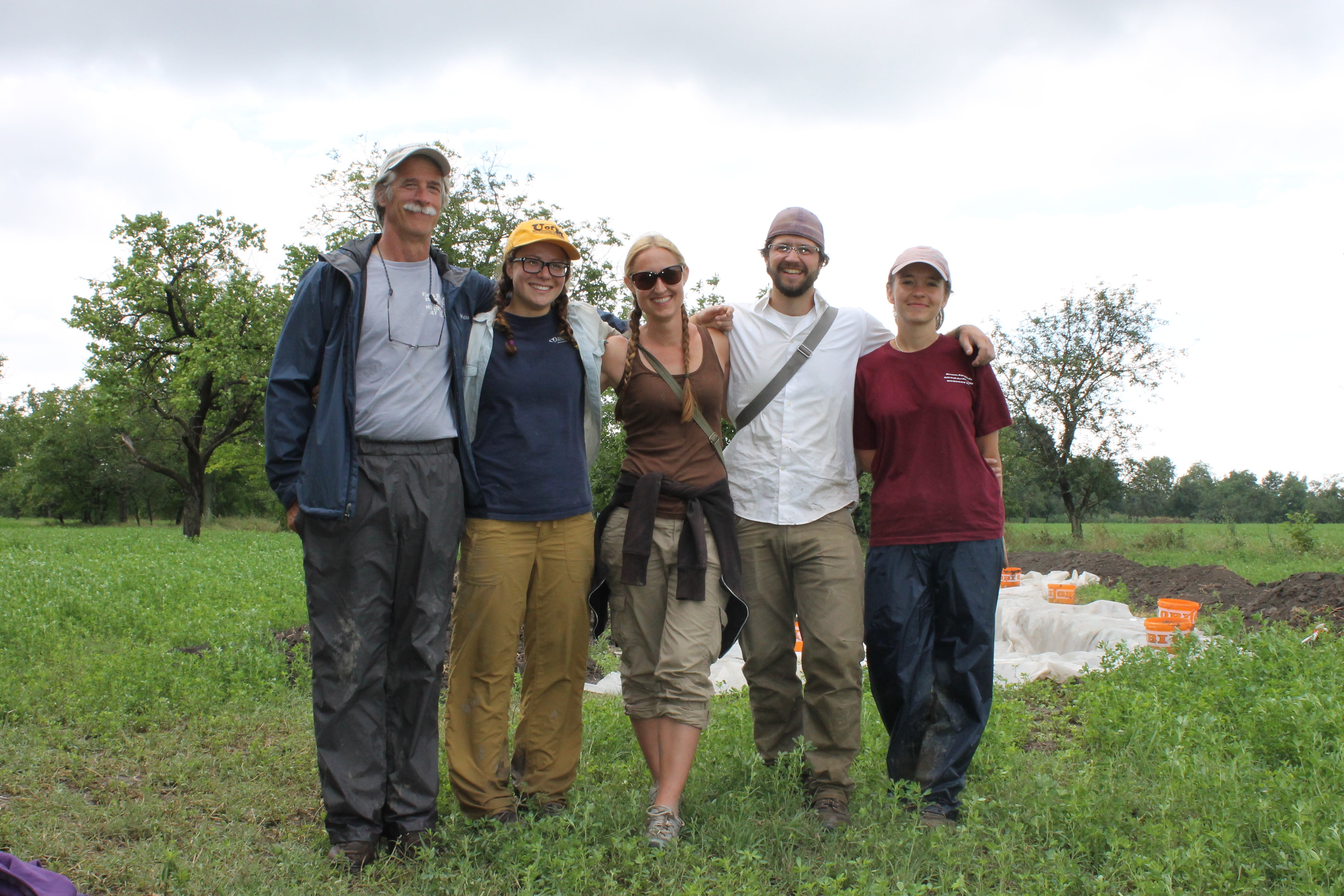Unfortunately, the weather hasn’t improved much since my last post. We completed a full day of fieldwork on Monday, but an evening thunderstorm forced us to spend Tuesday in the lab. Regardless, we accomplished a lot in the field both on Monday and today (Wednesday). Amy, Tim, and I focused on exposing structures 11 and 12, and the rest of the crew continued to dig in the main block, attempting to bring all the excavation units down to the level of the stratigraphic trench. You can see in the above picture that the trench has gotten quite deep! Tim has been working tirelessly inside of it in order to uncover the earlier occupations at Pecica.

One of our crew made a special find on Monday – a miniature pot. Miniatures aren’t uncommon here at Pecica and represent a special class of ceramics. Some common ceramic forms we see at Pecica include jars of various sizes, bowls, cooking vessels, and large storage vessels. Strainers, lids, and “fish plates” (probably crucibles) are rarer. Style varies, but interesting motifs and decorations include fingernail impressions on rims and bodies.
In the lab, we’ve already begun to analyze this year’s finds. Polly Anna has started working on identifying the faunal remains at the site. Fauna here includes horse, cattle, and red deer among other animals, as well as domesticates like dog and pig.

Pecica seems to have been a center for the horse trade during the Bronze Age. By studying the faunal remains at Pecica, we can learn about the site’s role in regional trade and interaction as well as its subsistence practices. Other students have been busy with data entry, GIS (Global Information Systems), and photographing diagnostic artifacts.
Over the weekend, we took a field trip to another Bronze Age site across the border in Hungary. Unlike Pecica, this site isn’t a Maros tell, but a Gyulavarsánd cemetery. In the area of the Carpathian Basin where this cemetery was located, cremation burials were common. The Bronze Age Körös Off-Tell Archaeology (BAKOTA) Project, spearheaded by Paul R. Duffy and Györgyi Parditka, is currently excavating these cremation burials in order to learn more about the emergence of social inequality during the Bronze Age.
 The BAKOTA project excavates cremation urns in the field, and then conducts “microexcavations” in the lab, carefully removing a few centimeters of sediment at a time from the urns and mapping the spatial distribution of skeletal elements. Bone still retains some integrity after cremation, and small fragments can help ascertain sex and age. We haven’t found any burials at Pecica or an associated cemetery, but if we did, they would likely be inhumations instead of cremations. Inhumations are characteristic of the Maros culture whereas BAKOTA’s cremations are characteristic of the neighboring Gyulavarsánd. It was interesting to see how another project focused on the Bronze Age is answering questions about the dynamics of the period at a site very different from our own.
The BAKOTA project excavates cremation urns in the field, and then conducts “microexcavations” in the lab, carefully removing a few centimeters of sediment at a time from the urns and mapping the spatial distribution of skeletal elements. Bone still retains some integrity after cremation, and small fragments can help ascertain sex and age. We haven’t found any burials at Pecica or an associated cemetery, but if we did, they would likely be inhumations instead of cremations. Inhumations are characteristic of the Maros culture whereas BAKOTA’s cremations are characteristic of the neighboring Gyulavarsánd. It was interesting to see how another project focused on the Bronze Age is answering questions about the dynamics of the period at a site very different from our own.
Once again, we’re continually hoping for sun. Being caught up with lab work is great, but we really need to spend more time in the field!




